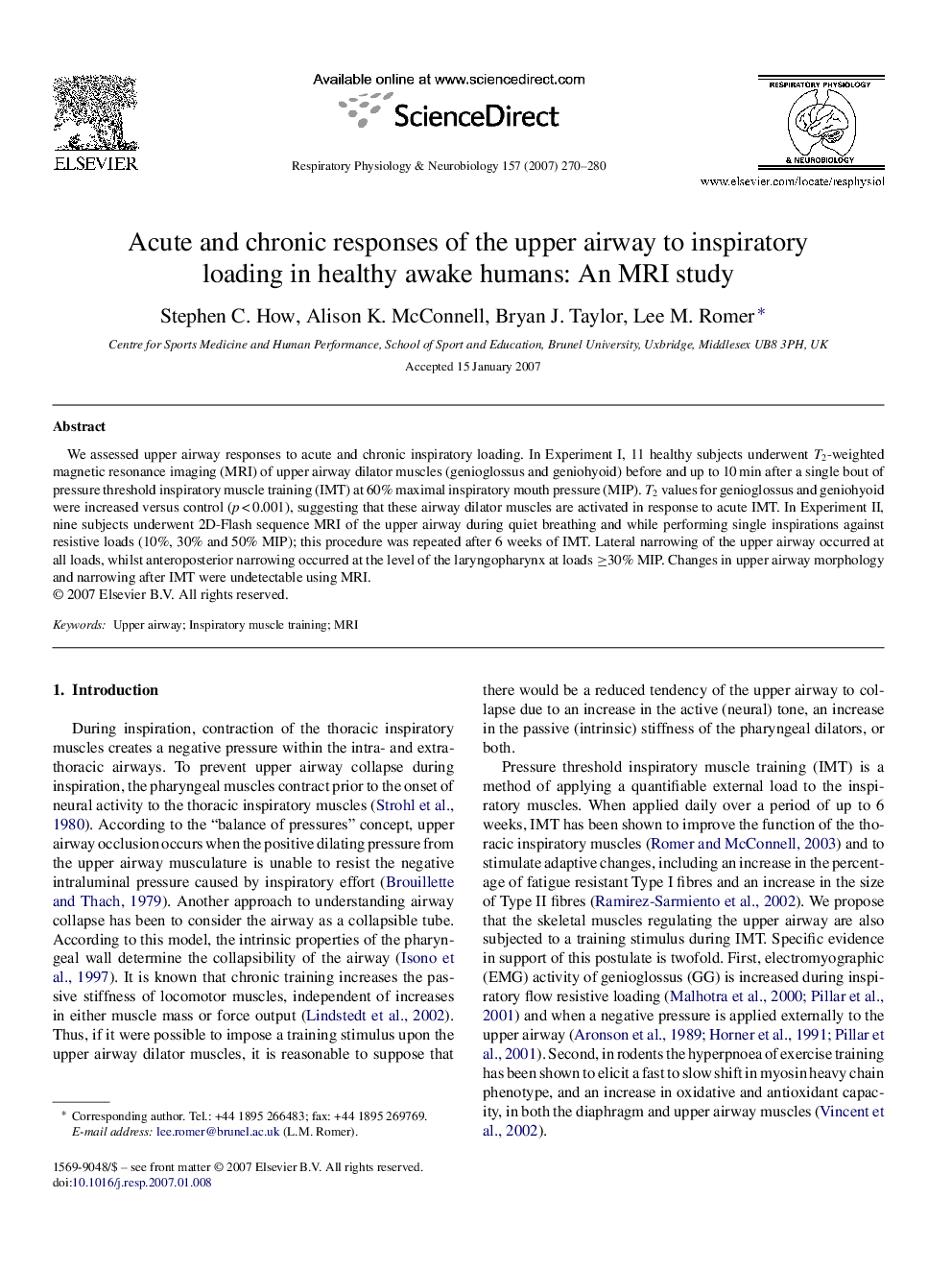| Article ID | Journal | Published Year | Pages | File Type |
|---|---|---|---|---|
| 2848335 | Respiratory Physiology & Neurobiology | 2007 | 11 Pages |
We assessed upper airway responses to acute and chronic inspiratory loading. In Experiment I, 11 healthy subjects underwent T2-weighted magnetic resonance imaging (MRI) of upper airway dilator muscles (genioglossus and geniohyoid) before and up to 10 min after a single bout of pressure threshold inspiratory muscle training (IMT) at 60% maximal inspiratory mouth pressure (MIP). T2 values for genioglossus and geniohyoid were increased versus control (p < 0.001), suggesting that these airway dilator muscles are activated in response to acute IMT. In Experiment II, nine subjects underwent 2D-Flash sequence MRI of the upper airway during quiet breathing and while performing single inspirations against resistive loads (10%, 30% and 50% MIP); this procedure was repeated after 6 weeks of IMT. Lateral narrowing of the upper airway occurred at all loads, whilst anteroposterior narrowing occurred at the level of the laryngopharynx at loads ≥30% MIP. Changes in upper airway morphology and narrowing after IMT were undetectable using MRI.
